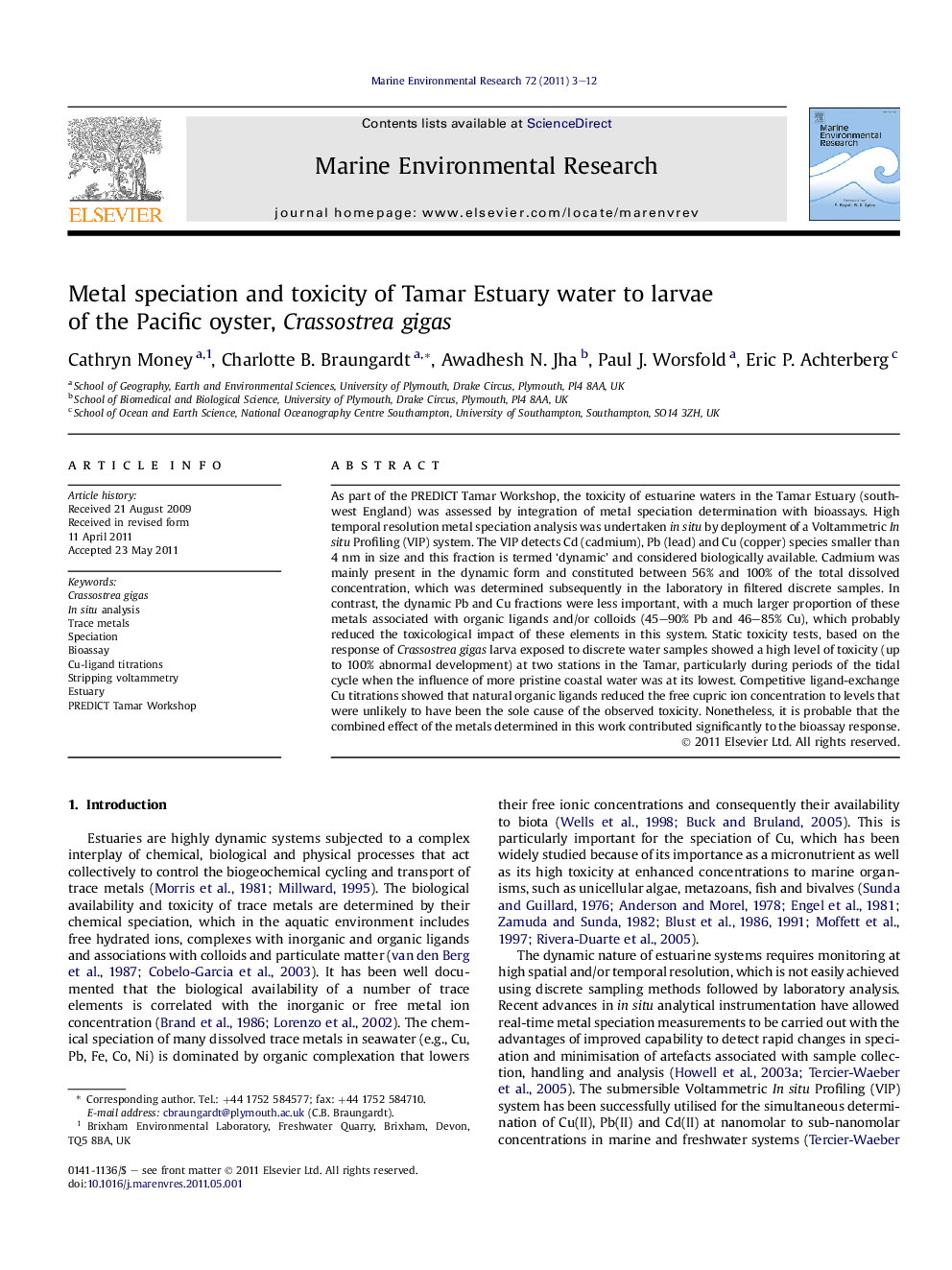| کد مقاله | کد نشریه | سال انتشار | مقاله انگلیسی | نسخه تمام متن |
|---|---|---|---|---|
| 4551048 | 1627609 | 2011 | 10 صفحه PDF | دانلود رایگان |

As part of the PREDICT Tamar Workshop, the toxicity of estuarine waters in the Tamar Estuary (southwest England) was assessed by integration of metal speciation determination with bioassays. High temporal resolution metal speciation analysis was undertaken in situ by deployment of a Voltammetric In situ Profiling (VIP) system. The VIP detects Cd (cadmium), Pb (lead) and Cu (copper) species smaller than 4 nm in size and this fraction is termed ‘dynamic’ and considered biologically available. Cadmium was mainly present in the dynamic form and constituted between 56% and 100% of the total dissolved concentration, which was determined subsequently in the laboratory in filtered discrete samples. In contrast, the dynamic Pb and Cu fractions were less important, with a much larger proportion of these metals associated with organic ligands and/or colloids (45–90% Pb and 46–85% Cu), which probably reduced the toxicological impact of these elements in this system. Static toxicity tests, based on the response of Crassostrea gigas larva exposed to discrete water samples showed a high level of toxicity (up to 100% abnormal development) at two stations in the Tamar, particularly during periods of the tidal cycle when the influence of more pristine coastal water was at its lowest. Competitive ligand-exchange Cu titrations showed that natural organic ligands reduced the free cupric ion concentration to levels that were unlikely to have been the sole cause of the observed toxicity. Nonetheless, it is probable that the combined effect of the metals determined in this work contributed significantly to the bioassay response.
► Dissolved Cu, Cd and Pb speciation analysis was carried out in situ at high temporal resolution in estuarine waters.
► Crassostrea gigas larva showed up to 100% abnormal development when exposed to estuarine waters collected at low tide.
► Competitive ligand-exchange Cu titrations showed that natural organic ligands reduced the free cupric ion concentration.
► The combined effect of metals and organic contaminants on toxicity remains poorly constrained and requires further study.
Journal: Marine Environmental Research - Volume 72, Issues 1–2, July 2011, Pages 3–12